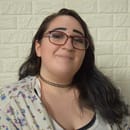There are so many reasons why making your own makeup would be a great idea. It brings down the cost of buying makeup, you can tweak the ingredients of makeup so something you’re allergic to isn’t in your products, or make makeup that’s all natural and organic that’s much better for sensitive skin and wholesome living. It’s also just a really fun activity to do with friends, and can be stress-relieving to do. For myself, I’ve made my own foundation, powder, setting spray, sugar scrub, and lipstick before (cause I’m a level A Pinterest Mom). In the picture below left to right is the pomegranate lip scrub, white concealer, brownish-orange eyeshadow, lavender highlighter, and pink lip balm. The products actually weren’t terrible, and even if they’re not as amazing as Sephora’s $50 products, I’ve always used and liked the products I’ve made. So here’s recipes I found for how to make different makeup products!
Lipstick
Don’t be fooled by the number of ingredients, because most of them you could easily find in your local grocery store if you don’t already have them. This DIY lipstick is made up of coconut oil, shea/cocoa butter, beeswax, powder color, and a few drops of your favorite essential oil. I looked at a number of recipes and most of them, like this lipstick, contained the same ingredients. And remember you can make as many as you want, any color, and any scent!
Foundation
Right here is a power foundation recipe made using arrowroot powder, cocoa powder, ground cinnamon, nutmeg, and jojoba oil. Everything Pretty uses the same recipe for powder, but adds ingredients to it to make a liquid foundation. Just add shea butter, argan oil, cocoa butter, beeswax, and vitamin E oil. You can also make a simpler version with just vitamin E oil and coconut oil.
Bronzer
DIY powder bronzer is so easy to make because it’s just mixing powders together, and all recipes I looked at had the same ingredients. Specifically, cinnamon, cocoa, nutmeg, and arrowroot powder; with a few drops of lavender or rosemary essential oil. I happened to find one recipe for liquid bronzer made with coconut oil, shea butter, and bronze and silver mica powder. You can also mix the powder bronzer with body lotion for your whole figure!
Blush
There were so many recipes for blush that it was hard to find the best, but I narrowed it down to three different ones. This all-natural powder blush is only made of three ingredients: arrowroot powder, hibiscus powder, and cinnamon (optional). Other recipes swap this with beet, nutmeg, cocoa, and ginger powders. This blush recipe specifically gives variations of different powders and how swapping or changing the amounts affects the color and tone of the blush. Finally, I found this awesome cream blush of shea butter, vegetable emulsifying wax, aloe leaf juice, and beet or madder root powder.
Mascara
I feel like every mascara is marketed the same as thickening and lengthening, but do they really all do that? How about a mascara that doesn’t just look nice, but is good for your lashes? Brought to you by Thank Your Body, this homemade mascara is made up of coconut oil, aloe vera gel, beeswax, and activated charcoal. I also found a second recipe for mascara that includes shea butter, jojoba oil, and vitamin E instead of aloe vera gel.
Highlighter
A lot of recipes had the same three ingredients for DIY powder highlighter: almond/grapeseed oil, beeswax, and white mica powder. For some variety, I also found a YouTube video for how to make liquid highlighter in a dropper bottle, mixing pigment (or DIY powder highlighter) with jojoba oil. Another YouTube video shows how to make jelly highlighter by mixing highlighter powder with aloe vera gel, almond oil, and grapeseed oil.
Eyeliner
All the recipes I looked at for eyeliner had the same basic ingredients: activated charcoal, coconut oil, and aloe vera gel. Some recipes switched activated charcoal with black oxide, or this eyeliner that swapped aloe vera and coconut oil with arrowroot starch and water.
Setting Powder
For a more colorless setting powder, all you need is arrowroot powder and healing/bentonite clay. To add more color, this powder recipe mixes arrowroot powder with cocoa powder and cinnamon.
Setting Spray
There were so many recipes and dupes for setting spray, and a lot of them were different. One setting spray used water, vegetable, glycerin, witch hazel, and essential oils; while others just used glycerin or swapped rose water for regular water. I also found a green tea setting spray made of Lipton green tea, glycerin, and essential oil.
Eyeshadow
This is one of the most fun products to DIY because you have endless possibilities. A simple eyeshadow recipe contains a base of arrowroot powder and shea butter, which is mixed with pigments provided by cocoa powder, nutmeg, beet powder, tumeric, or allspice. This eyeshadow recipe explains how to make different colors from specific amounts of each ingredient. For a more bold eyeshadow, purchase micas (mineral powder) from TKB Trading, this eyeshadow recipe explains how to mix micas to get different colors.
Face & Eyeshadow Primer
Homemade primer is just a mixture of face moisturizer, aloe vera, and foundation (your DIY foundation can be used!). You can even include sunscreen if you’d like. Some recipes swap moisturizer for coconut oil, or add powder to prevent shine. For eyeshadow primer, all you need is bentonite/kaolin clay, cornstarch/arrowroot powder, and aloe vera gel.
Lip Gloss
Brought to you by Buzzfeed, this lip gloss only has two ingredients: coconut oil and non-toxic crayons. You just melt the two ingredients together and mix, then let it dry. You can make as much as you want, and any arrange of different colors! If you don’t want crayons on your face, here’s a more natural lip gloss using beeswax, shea butter, coconut/almond oil, caster oil, your favorite essential oil, and any pigment, mica, or spice.
Lip Balm
I highly recommend you look up DIY lip balm on Pinterest because there are so many recipes with different colors, scents, and flavors. There’s different recipes for cold sores, healing balms, different fruit or spices, and holiday-themed ones. A simple recipe for lip balm calls for coconut oil, jojoba oil, cocoa butter, beeswax, vitamin E, and a bunch of drops of your favorite essential oil. You can also add alkanet root powder or hibiscus powder for a natural tint. Another recipe for lip balm only uses beeswax, coconut oil, honey, vitamin E oil, and essential oil.
So as you can see, a lot of recipes for different natural makeup use the same ingredients, so one grocery trip could supply enough products for a new full face of makeup. Also, different DIY makeups can be combined to make more DIY makeups, like mixing powder foundation into face primer, liquid foundation, and setting powder. If you’re unable to find some weird ingredients, like jojoba oil or bentonite clay, all recipes I provided conveniently link where to purchase them online or specifically list where you can find them. Doing this research definitely taught me a lot about how easy and versatile it is to make your own natural makeup, and I hope it taught you too. Now BRB I’m bought to make my own rose-vanilla lip balm.



